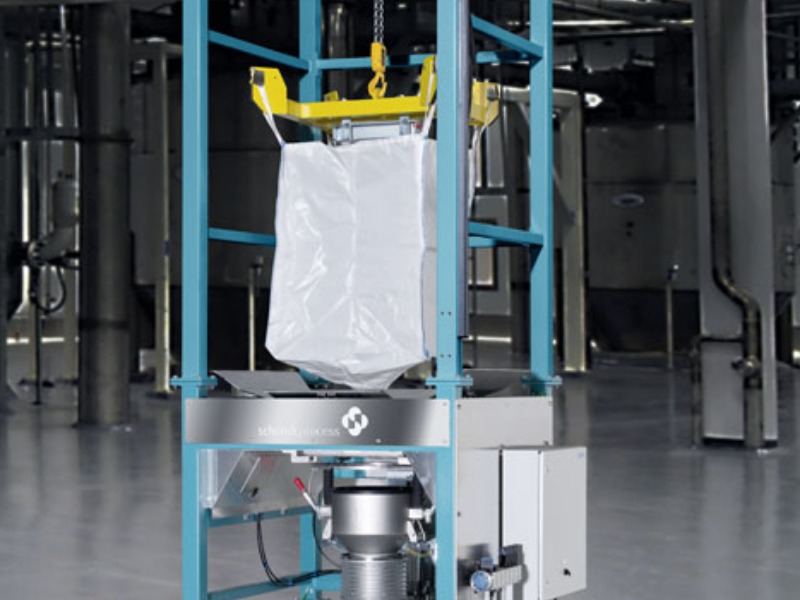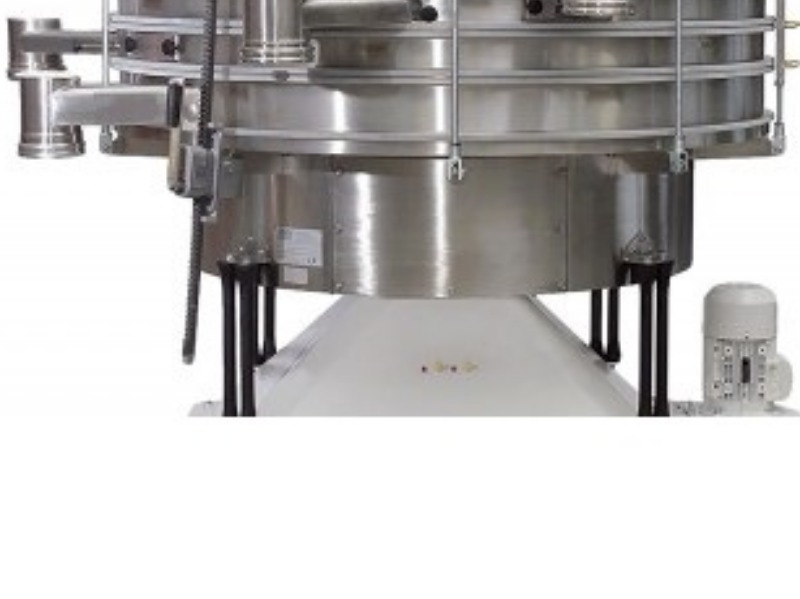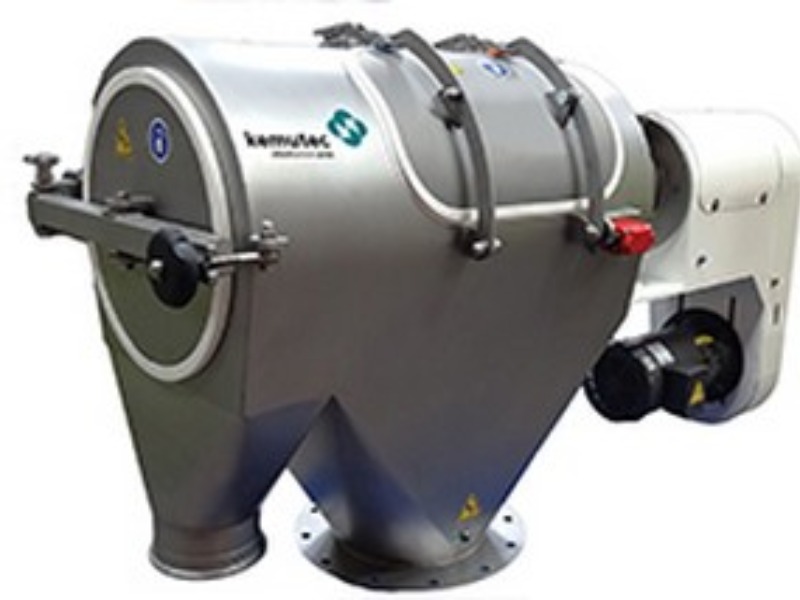

Schenck Process
http://www.schenckprocess.com
Schenck Process
About company
We Simplify Difficult Pet Food Manufacturing Processes
Producing the highest quality product is at the top of your mind. Your system must minimize product degradation, eliminate inefficiencies, and ensure product safety. Because your process is unique, customized system upgrades are preferable to a one-size-fits-all solution. One thing is for sure, the upgrade must deliver significant cost and energy savings. This could be a tough project. Or maybe not….
Schenck Process provides pneumatic conveying, mixing, blending, milling, sifting, weighing, feeding, dust collection and process control solutions for the world’s most recognizable pet food brands. Protecting your brand? We’ll help you do it. Difficult projects? We’ve conquered them.
Our team of in-house engineers understands the specialized needs of the pet food industry. We’ll help you select the right technology solution and manage your project to a successful conclusion.
Schenck Process delivers custom-designed and engineered solutions for the pet food industry. Here is a sample of some our pet food applications:
- Truck or Railcar unloading & bulk storage systems
- In-plant transfer systems for major, minor and micro ingredients
- Plant controls system upgrades
- Plant dust control systems
- Hammermill aspiration, convey and dust control
- Scaling systems for blenders and extruders
- Continuous dense phase transfer of finished products
- Emissions control systems for dryers and coolers
- Off spec product reclaim and remill systems
- Extruder negative airlifts
- Feeding ingredients into dry kibble and wet shred processes
- Ratioing palatants and dry kibble into enrobers for coating applications
- Measuring mass flow of base ingredients into extruders
- Removal of fines and other extraneous materials
- Gentle grinding of raw ingredients
Products
Company News
 Manufacturing Process
Manufacturing Process

4+ MIN





30/03/2023
Troubleshooting a Flushing Feeder
Low Angle of Repose To start our investigation, we look at the material itself. Is it aeratable and, once aerated, does it fluidize like a liquid? We can evaluate this by measuring the material's angle of repose. Picture a pile of material sitting on a flat surface. The angle of repose is the angle between the flat surface and one side of the pile. Higher angles of repose happen when a material is cohesive and sticks to itself. Lower angles of repose mean the material is more free-flowing and could potentially be floodable. Low-angle-of-repose materials are more prone to flushing out of a feeder than those with higher angles of repose. Refill Set Points The next place to look? Refill setpoints. When the feeder calls for a refill, the incoming material aerates the material inside of the feeder. This can fluidize this material and flush it out of the feeder. When that happens, the entire line must be paused so the feeder can be properly refilled again. The solution? Raise the set point until there is a nice heel or head of material over the feed screw. This will protect the rest of the material inside the feeder from the charge coming in. Because it is protected, the material inside of the feeder doesn't fluidize. In other words, you can prevent flushing of a low angle-of-repose, floodable material with more frequent, smaller refills. Material Voids We have looked at issues affecting low-angle-of-repose materials. However, even high-angle-of-repose materials sometimes flood out of a feeder. Two scenarios contribute to this: Ratholing Material bridges Figure 1: Ratholing example There is also the material bridge scenario. Like a rathole, a material bridge involves a small void. In this case, the void occurs in the shape of a small bridge over the feed screw. When this bridge collapses, the material can flush out of the feeder. In either of these scenarios, a feeder with internal agitation may be needed to keep material from ratholing or bridging. Figure 2: Internal feeder agitation The next place to look is with the refill system itself: gravity, pneumatic, or vacuum. Gravity System In a typical gravity system of a bin with a refill valve at the bottom, a long drop to the feeder can cause the material inside the feeder to aerate and flush out. There are two ways to address this: Move the refill valve (butterfly valve or slide-gate valve) closer to the feeder so the material does not have as far to fall. This is the best option, but may not always be possible. Install a baffle inside the feeder's extension hopper. The baffle can be a piece of angle iron pointed up toward the inlet of the feeder's extension hopper. Or it can be a conical piece of material supported inside the feeder. These will baffle the impact of the material coming into the feeder. However, installing baffles can be tricky—material may hang up on them, and the hopper could eventually become blocked. Pneumatic and Vacuum Systems In a pneumatic or vacuum-type system, material that has been aerated before entering the feeder can also cause flushing. The solution is to give the material enough time to de-aerate after being picked up and conveyed. A larger refill bin above the feeder will allow the material to de-aerate before it is introduced into the feeder. Figure 3: Refill bin above a feeder Is the material only flushing with the first refill? Filling a feeder with a floodable material for the first time can cause the material to flood out of the feeder. Three ways to prevent flooding in this situation are: Incorporating a center rod inside the feed screw to take up the void in the feed screw spiral or helix. Using a side discharge, which gives the material a wall or end cap to overcome before it is fed out. Using a discharge plunger to stop the discharge of the feeder during the initial refill, then opening the discharge of the feeder the rest of the time. This is ideal for extremely floodable materials. Figure 4: Helix with center rod Clogged Filtration System Another place we need to look at is the filtration system of the feeder. If the feeder has a blinded-up dust sock, the air inside the feeder cannot move out as new material comes in. Air will always take the path of least resistance, so if one exit is plugged (dust sock), the air will find its way out through the discharge point of the feeder—and it will bring the material with it. Downstream Effects Finally, what is downstream of the feeder? Are we feeding into a pressurized or vacuum-type system below the feeder? The vacuum may be strong enough to pull the material out of the feeder before the feeder has a chance to weigh it. If this is the case, investigate isolating the feeder from the downstream vacuum with a vented rotary airlock or a smaller screw conveyor. Reach Out for Help Hopefully, these scenarios have given you some ideas of what to look at if you experience a flushing or flooding feeder. Feel free to give an applications engineer a call to help troubleshoot your system or, better yet, have a technician come out. This small investment can prevent significant losses of revenue from downtime and product waste. By: Todd D. Messmer - Weighing and Feeding Product Manager Source: Schenck Process
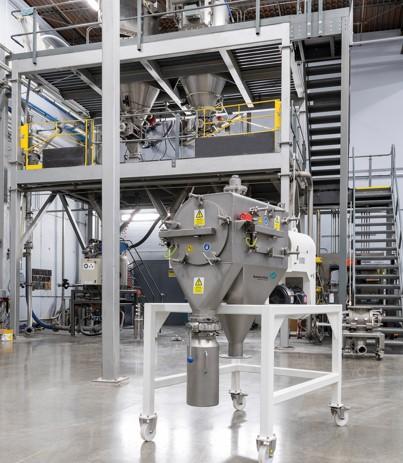 Manufacturing Process
Manufacturing Process

2+ MIN





09/06/2022
Cantilever Shaft Design for Kemutec KEK® Centrifugal Sifters Improves Powder Processing Hygiene and Ease of Operation
Innovative design, which has been implemented on virtually every model of KEK® Centrifugal Sifters, features an easy-to-remove hygienic screen basket and paddle screw assembly, a hinged oversize end door, and bolted flanges for dust-tight operation. The sifters also operate quietly without vibration. The cantilevered design improves efficiency with its clean, simple features that are operator friendly – no tools are required for stripping down and cleaning – along with the time saved during an inspection, cleaning, and maintenance. The units also contain easily removable sifter screens for inspection and cleaning, and easy access via the oversize end door, which opens in seconds. There is zero leakage or contamination from the oversize end door. The sifters are ideal for feedstock policing, scalping, dedusting, conditioning, and deagglomerating; but can also be used in unique applications, such as de-packing, fruit dumping, inline sieving, gas purging, and explosion containment. Pending suitability, these sifters are available with white nylon sifting screens, stainless steel wedge wire, or woven wire screens. They are built to handle the most arduous, heavy-duty applications where access for maintenance is severely limited, such as toxic and radioactive processes. Also, optional screen protectors eject incoming extraneous objects, which could damage the sieving mesh. For further improvement of the sifter's hygienic capabilities, the units can also include clean-in-place spray facilities, inlet section access door, and additional inspection doors on the sifter body. The design is also available on KEK® models K300C, K650C, K800C, and K1150C (the largest cantilevered sifter with capacities of up to 80 tons per hour). "Schenck Process has established itself as the bulk materials, handling providers trust most throughout the process industries by creating a culture of constant innovation, and always looking at how our extensive product portfolio can better serve customers", said Karin Galloway, Executive Director of Sales – Kemutec North America. "The Kemutec KEK® Centrifugal Sifter line with unparalleled hygienic and ease-of-use standards exemplify that commitment." To view KEK Centrifugal Sifters in action, click HERE Source: Schenck Process
 Market Information
Market Information

2+ MIN





05/07/2021
Schenck Process with strong start into 2021: Record high in order intake and launch of digital brand
Highlights Q1 2021: Order intake 231m€; up 44%; a record high. Sales 147m€; up 13%. Adjusted EBITDA 17.2m€; up 34% with improved EBITDA-margin of 11.7% (Q1 2020: 9.9%). Baker Perkins, the Group's recent acquisition, outperforming expectations. Order intake (fx-adjusted) grew across several end markets and regions, most notably food (123%), chemicals & performance materials (83%) and the Americas region (83%). Over 50% of order intake continues to be generated from the Group's strategic focus markets of food and mining. Looking forward, across all markets and regions, there is a strong project pipeline reflecting the broad-based pick up in business activity. In Q1 2021 Schenck Process booked additional orders from a leading pet food producer with current expectations of a total order value of over US$150m by year end. The Group also secured further project wins in the chemicals and performance materials markets. In the Chinese polycarbonate industry, Schenck Process achieved a considerable milestone with a first large-scale order from a leading supplier of innovative chemical products. With a focus on environmental-friendly solutions, the Group supported customers in achieving their sustainability goals. In EMEA, Schenck Process enabled a cement and building materials producer to reduce the fuel supply from coal and CO2 footprint by introducing alternative energy sources. In March, Schenck Process launched its digital brand Schenck Process NEXT and introduced its IoT backbone CONiQ® Cloud. Both are key drivers to enhance the Group's digital offerings and leading towards a future of increased connectivity. Further details and updates are available on the Schenck Process NEXT website. CEO Keith Cochrane commented: 'Despite the challenges of the pandemic, the Group has made a strong start to 2021 delivering a good Q1 financial performance and effective execution on our strategy. I am confident that we can continue to demonstrate the strength of our business model and deliver on our strategy moving forward.' About Schenck Process Schenck Process is a leading global provider of sustainable products, integrated solutions and services in mission critical applications for bulk materials. Headquartered in Darmstadt, Germany the Group has 2,800 employees with a presence in over 20 countries across five continents focused on the food, mining, chemicals and performance materials, and infrastructure and energy market segments. The product offering includes solution for industrial weighing, feeding, conveying, pulverizing and classification, screening, mixing and blending and associated digital applications. The Group was acquired by Blackstone International in 2017 and generated revenues of nearly €600m for the year ended 31 December 2020. For further company news and information, please visit By: Schenck Process
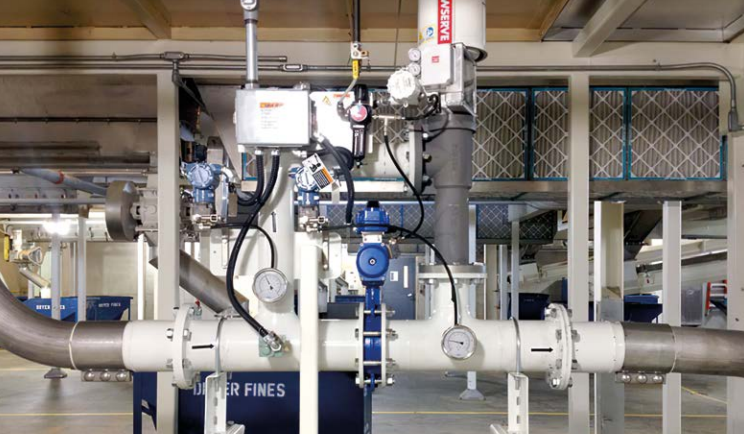 Conveying Systems
Conveying Systems

1+ MIN





09/06/2021
E-finity® Pneumatic Conveying System is Designed for Stability and Reliability
Precise pressure monitoring and airflow corrections allow the system to operate efficiently under all conditions, while gently inducing materials through the convey line in slug form. E-finity® is ideally suited for granular and pelleted materials, and has proven itself on many pet food manufacturing applications. Unique E-finity® air controls can employ a single air source to operate 2-3 different systems simultaneously. The result is a significant cost savings in both equipment and installation, with continued savings in operation and maintenance moving forward. Schenck Process' ability to design, size, sell, fabricate, and integrate other OEM processes as well as installing and providing ongoing support delivers full control. As a primary equipment manufacturer, Schenck Process manages production schedules for faster lead times on highly engineered, custom-built systems. The end result is a predictable, efficient, and effective material handling process. Contact Schenck Process to schedule a full-scale test to quantify the energy requirements and degradation results for your specific products. By: Schenck Process
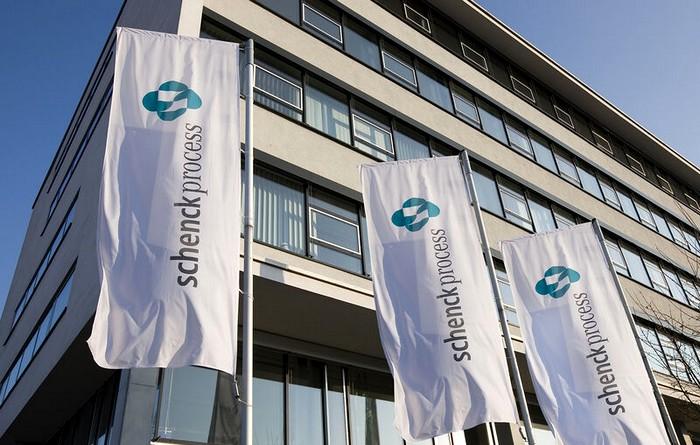 Manufacturing Process
Manufacturing Process

2+ MIN





19/10/2020
Schenck Process to Acquire Baker Perkins
Schenck Process Group (SPG) has reached an agreement to acquire Baker Perkins, a leading global supplier of food processing equipment and aftermarket services for the bakery, confectionery, biscuit, cookie and cracker, breakfast cereal and pet food end-markets. Headquartered in Peterborough, United Kingdom, Baker Perkins serves a diverse & growing mix of customers across the food industry globally.
This acquisition is a continuation of SPG's strategic focus to further extend its global offering for the food end-markets. It will significantly strengthen European capabilities in the food processing and equipment sector, broaden our product offering in the Americas and provide opportunities for growth across the Asia Pacific region. We will build upon the knowledge, experience and customer relationships of the Baker Perkins team to support future growth, whilst remaining fully committed to existing facilities in Peterborough and Grand Rapids, Michigan.
Upon completion, the business will continue to be run by the existing managing directors as part of the SPG regional business structure. The transaction is expected to close in Q4 2020.
Keith Cochrane, CEO of SPG, said:
I am delighted to see Baker Perkins join us. This is a long-established business with a reputation for excellent products and customer service, with a similar business model to our own. It will complement and extend our existing product offering to the food end-market, which is a key strategic focus, providing good opportunities for future growth, operating efficiency and further value creation for all stakeholders.
Mr Dan Bassett, MD Baker Perkins UK, commented:
We have been looking for a long-term partner prepared to invest in the company and continue its development for many years to come. We can relate to the SPG culture that encourages local autonomy and entrepreneurship, which fits well with our independent mind-set. Already we can see significant opportunities for growth, and I am excited at the prospect of working together.
Mr Dan Smith, MD Baker Perkins US, added:
Schenck Process already has a significant footprint in the US market, and we can see major opportunities in the combination of our expertise and product range.
by All Extruded
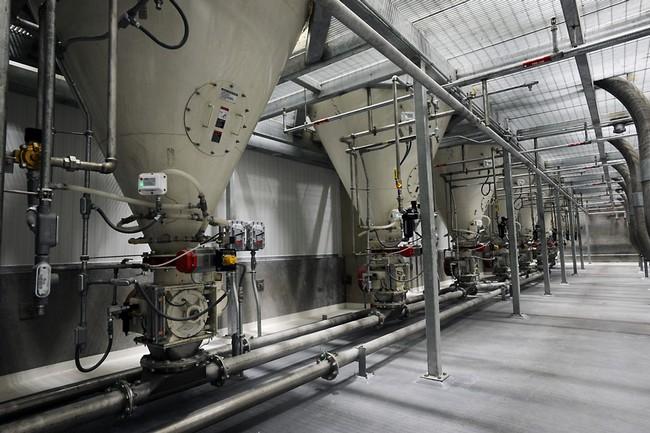 Conveying Systems
Conveying Systems

5+ MIN





24/09/2020
Pet Food: Bulk Material Handling Systems
The pet food industry has long searched for methods to control the movement of ingredients through to the manufacture of the finished product and from process to packaging in a reliable, inexpensive, maintenance-free system that yields little or no breakage. Schenck Process provides a range of pneumatic and mechanical conveying solutions, bulk material feeders, sifters, screeners, mixers, mills and process controls for the world's most recognizable pet food brands. With a vast amount of experience in the pet food industry, Schenck Process is able to provide process solutions based on the company's core technologies and can advise and design the most suitable arrangement of equipment to improve the efficiency and production rates of most processes. Aware of the need to produce the highest quality product together with minimal product degradation, the elimination of inefficiencies and ensuring product safety, Schenck Process can tailor the solution provided to the specific requirements of the client and the installation. Examples of recent installations for the Pet Food industry include: Truck or Railcar unloading and bulk storage systems of meal In-plant transfer systems for major, minor and micro ingredients Plant controls system upgrades Plant dust control systems Hammermill aspiration, convey and dust control Scaling systems for blenders and extruders Coatings handling systems Continuous dense phase transfer of finished products Emissions control systems for dryers and coolers Feeding of majors, minors and dry palatants Off-spec product reclaim and remill systems Extruder negative airlifts Odor abatement The range of technologies available from Schenck Process includes the following: E-finity® Low Pressure Continuous Dense Phase (LPCDP) Pneumatic Conveying systems deliver the least amount of airflow to convey the product with minimal degradation. The system is configured to have a smooth and lip-free connection on tube joints, diverters that reduce cross contamination and provide a smooth, full bore divert and the product is slowed to slide into the termination bin for a gentle landing. Gardner Ribbon Mixers provide consistent batch and continuous blending of powders and granules. The mixers use low energy and provide gentle mixing action with minimal heat generation ensuring that minor ingredients are dispersed homogeneously without the need for pre-mixing. Models with capacities ranging from 50 to 20,000 liters are available. GKM Screeners provide controlled screening, multi-deck classification and de-dusting of dry, powdered and granular products. The screener is particularly suitable for high feed rates, multi-deck separations of fines and difficult to screen lightweight products. Global Cleanable Airlocks (GCA) are ideal for applications where dry raw or finished products are being handled in the process and where inspection or system clean-out are required. Because the GCA is designed for high process rates and possesses a number of features suited for sanitary processes the airlock is perfect for pet food applications. Horizontal Material Separators are cyclones that separate conveyed material from the conveying airstream, minimizing the amount of air that exits with discharge material. The horizontal cyclone design is similar to a standard cyclone however; the main housing unit is turned 90° with both cylinder ends capped. The HMS has a vertical footprint that is 50% less than standard cyclones taking up less manufacturing space and is perfect for handling large and small kibble, large flakes and fish feed. Kemutec Kek Cone Mills are versatile size reduction machines for powder processing applications. With an ability to process a wide range of feed material and produce an equally wide range of product make the cone mill ideal for sizing in both wet and dry granulation processes. The Kek Cone Mill provides a gentle, low energy form of size reduction and eliminates traditional milling problems including noise, dust and heat generation. The gentle grinding action is capable of control within fine limits while maintaining a close particle size distribution with minimal fines generation. Kemutec Kek Sifters are designed for the removal of unwanted materials such as strings, packaging, and insects from bulk product or minor ingredients along with the removal of de-agglomerated hard lumps of product. Fitted with a cantilever shaft the Kek Sifter provides users with a high standard of hygiene and ease of operation. A 30-second screen change and no tools required for stripping the unit down make cleaning and maintenance quick and easy. MCF PowerSaver® Dust Collectors save up to 50% of operational costs by using medium pressure air for the cleaning cycle. An integrated blower provides the 0.49 bar medium pressure air for cleaning which eliminates the need for plant compressed air in the filter and frees up existing compressed air capacity for use in other processes. The MCF PowerSaver provides excellent operational capabilities in high dust load applications. MechaTron® Feeders are perfectly suited to handle a wide range of volumetric or gravimetric feeding applications. With the unique feature of complete disassembly from the non-process side, users can quickly clean, reconfigure or service the feeder. Sanitary 3-A models of the MechaTron® are also available. The MechTron is perfectly suited for feeding majors, minors and dry palatants. ModuPlasma™ is an odor abatement system that uses direct treatment, which means the emission is led through the energy field, in opposition to other plasma solutions, where ozone is injected into the emission. This direct treatment results in oxidation 1 to 10 million times faster than in nature. Quick results and done in an environmentally safe manner. MoveMaster® Chain Conveyors for the movement of bulk grain supplies from delivery vehicles into storage silos. The chain conveyors have a high tensile strength to handle a large volume of material together in a reliable and efficient manner with minimal maintenance requirements. MULTICOR® Mass Flow Meter's accuracy, low profile, and dust tight solution make it ideal for extruder milled grain metering. Designed with a drive shaft and partitioned measuring wheel, the MULTICOR applies the science of Coriolis technology by accelerating the raw materials and their resultant forces to accurately measure flow rate. MULTIDOS® DEA Open Frame Weighbelts are designed specifically for sanitary pet food and food processes. A tool-less, rapid belt removal for frequent cleaning cycles, an IP69K stainless steel load cell manufactured to withstand high pressure spray, a shaft mounted, wash-down drive system for simple power transmission, and product contact surfaces with 316 stainless steel make it ideal for sanitary weighing and feeding applications. Supplied Air Extruder (SAE) Hood is a key component of the Schenck Process high feature Supplied Air Negative Airlift, which conveys extrudate from the extruder to the dryer with HEPA filtered or treated convey air instead of potentially contaminated air from the extruder room floor. This is important to all pet food producers concerned with avoiding finished product bacterial contamination after the extrusion kill step. by Schenck Process Source: All Extruded






